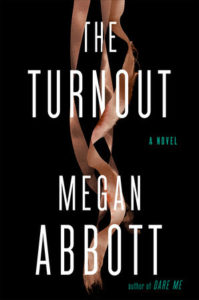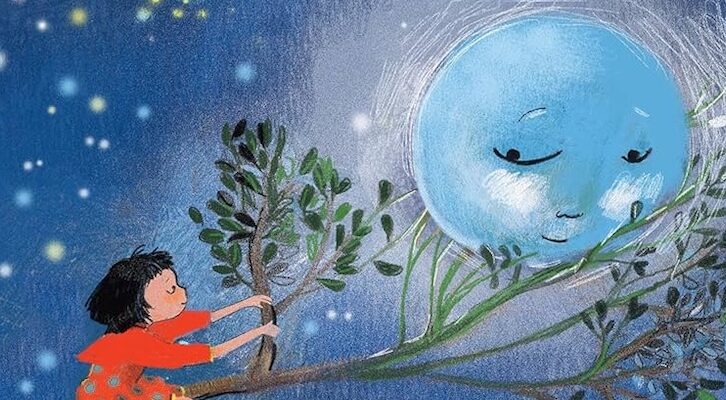Every writer has a bag of tricks to conjure the muse or to, as David Lynch puts it, “catch the big fish.” For some, it’s a simple ritual, such as “morning pages” or imposing a daily word count. For others, it may be a complicated mélange of caffeine, nicotine, booming opera music and a rigorous pass through the day’s tabloid reportage. Carson McCullers purportedly required a beer to start the writing day, then moved onto a sherry-tea concoction before turning to bourbon as her closer. I know at least one writer who has a standing desk/treadmill situation so he can constantly be moving as he writes—all while he has two TV screens rigged to soundlessly play movies on constant rotation. I’ve tried variations on all of these approaches, but in the end it almost always begins with a photograph, or several.
My first novel, Die a Little, sprang from one simple black-and-white photograph I tore from a magazine: a woman with a dark swirl of hair seated at a dinner table. We see her only from behind, but her hands are lifted as if she’s frantically telling her date a wild story. There’s a crackle of tension and a sheen of glamour all at once.

Ever since then, for every novel or screenplay, I collect a set of images that help me find a specific mood, tone and feeling. For my new novel The Turnout, it was the photos Sally Mann took of her children (see below). Their eerie beauty and intimacy helped me summon the magic I wanted to evoke for my three main characters—Dara, her sister Marie and her husband Charlie—who essentially raised one another but remain haunted by their troubled childhood.
These days, with this trick now well up my sleeve, I find myself returning to certain photographers or photographs across books. The photographers below are my usual suspects. This is a wholly personal, utterly idiosyncratic list. What do they have in common? I suppose a sense of mood and menace, the ache of love-gone-wrong. Through some kind of magic, they elicit very specific, intense feelings of heartbreak, desire, violence, greed, resilience. And one can look at one of their photos and imagine a whole, specific world.
WEEGEE
It’s impossible not to include the newspaper photographer Weegee, whose stark black-and-white photos of urban life, street crime, public mayhem exert an indelible influence over cultural representations of crime. I discovered him early and he’s never left me. Even if you think you don’t know Weegee, you probably have been his work, or the work of those influenced by him. His first book of photos—Naked City—became the basis of the 1948 movie and influenced an entire strain of gritty, tabloid noir and countless street photographers, including Arbus herself. Stanley Kubrick, in his newspaper photographer days, counted Weegee as an influence and even hired him to take pictures on the set of Dr. Strangelove.
“When I watched the other photographers, I saw they used the camera like a machine and that they thought like machines,” Weegee once said. “My idea was to make the camera human. I was dealing with people at their most tragic moments.” And while many of his photos are powerfully shocking, deadpan, harrowing, the ones that stick with me the most are the intimate portraits of working-class city life.
(Highly recommended: Christopher Bonanos’s biography, Flash: The Making of Weegee the Famous.)
TODD HIDO
“When you’ve had a bad experience,” Hido writes in his book On Landscapes, Interiors and the Nude, “you sometimes feel compelled to recreate it in a way that allows you to control it.”
Hido’s images summon feelings of loneliness, longing, danger. His series “Homes at Night” is one of my favorites. It reminds of taking walks through my quiet suburb as a kid, wondering what was going on in all these houses, these lit boxes keeping all their secrets. Hido cites Raymond Carver as one of his influences and you feel it all over his photos. “The way he writes, when I read it, makes me see pictures,” Hido told Aesthetica magazine. I love imagining this imaginative circuit between writer and photographer.
GORDON PARKS
Writer, filmmaker, painter and composer, Parks was the first Black photographer on staff at Life, where he worked for over 20 years. All his photos are dazzling but especially relevant to crime novels is his devastating “The Atmosphere of Crime” (1957) series, taken for Life as part of their efforts to cover a supposed crime wave in American cities. Parks’ photos—as glamorous and gritty as film noir—tell a different story: of marginalized communities trying to survive in the face of oppressive policing and a criminal justice system stacked against them.
GREGORY CREWDSON
I’ve long been fascinated by Crewdson, a much loved and influential photographer. As you’ll learn if you watch the wonderful documentary Gregory Crewdson: Brief Encounters, he stages his photos like movie shoots. They’re epic, steeped in big emotion and summoning the great melodramas by directors such as Douglas Sirk. In the pilot for Dare Me, we even cited him in the opening sequence:
EXT. SUTTON GROVE – FALL NIGHT 1 (FLASH-FORWARD)
A series of Gregory-Crewdson-style, darkly lovely BEAUTY
SHOTS show us a sleepy small town at night. Trees heavy with
autumn leaves. It’s both perfect and … off.
“I’m interested in using the iconography of nature and the American landscape as surrogates or metaphors for psychological anxiety, fear or desire,” Crewdson has said. And so we project ourselves onto these photos so heavy with meaning. We’re looking at something specific, but within it lies the universal.
DIANE ARBUS
Arbus famously said, “A photograph is a secret about a secret. The more it tells you the less you know.” And all her images have this elusive, enigmatic quality that draws you closer and closer. No photographer hovers in my brain with greater intensity. There’s a tendency to diminish or mischaracterize her photos as “weird” or to reduce them for an imagined shock value. I don’t see them that way. There’s a tenderness hovering, Arbus’s empathetic shutter, her heart beating there. She loves her subjects, and as a result they give up everything to us. These two images (The Fire Eater and the Sword Swallower below) were major touchpoints for me with my new novel, The Turnout.
WILLIAM EGGLESTON
The master of color photography, Eggleston’s influence is wide and spans the arts, from Donna Tartt to Sofia Coppola. Some of his images are so iconic you may be an Eggleston fan without even knowing it. A few years ago, I was lucky enough to serve as guest curator for The Beautiful Mysterious: The Extraordinary Gaze of William Eggleston, a superb exhibit at the University of Mississippi Museum and the experience meant I had to articulate what’s so ineffable in his photos. That feeling they evoke. Eggleston has talked about trying to “creep up” on his subjects and the photographs vibrate with that voyeuristic energy—what Tartt has called the “sparkle of menace.” You feel like you’re entering a narrative already underway and at a point of crisis, transformation, peril, release.
NAN GOLDIN
“Every time I go through something scary, traumatic, I survive by taking pictures.” So says the great, groundbreaking photographer Nan Goldin, now also an opioid-epidemic activist. Beginning with her groundbreaking 1986 The Ballad of Sexual Dependency series, her photos have long captured “found families”—hidden, vivid subcultures and scenes—in post-Stonewall New York City. And they’re intimate, often joyous, often heartbreaking and profoundly personal.
I’ve known Goldin’s work for years but returned to them when I was writing for HBO’s The Deuce. Goldin moved in some of the same 1970s Times Square circles as chronicled in the show and looking at them, they immediately transported me to the specific place of shellacked old bars, the whiff of bleach and beer, the crackle of sex and danger, the yearning for community, for love. “I used to think that I could never lose anyone if I photographed them enough,” Goldin famously said. “In fact, my pictures show me how much I’ve lost.”
Other favorites: Sally Mann, Ralph Eugene Meatyard, Stanley Kubrick, Susan Meiselas, Mary Ellen Mark, David McCarty, Saul Leiter, Helen Leavitt, Esther Bubley, Vivian Maier
Postscript: It’s perhaps a cliché now—though a delicious one—to see recommended pairings of a crime novel and a cocktail. Can anyone read Raymond Chandler and not crave a gimlet, or vice versa? Or James Bond and not ponder a vesper martini? But I ask you to consider the sneaky appeal of pairing crime fiction with the work of a distinctive photographer, or even a single photograph. What crime novelists might you imagine paired with the works of Weegee or Arbus?
***





















